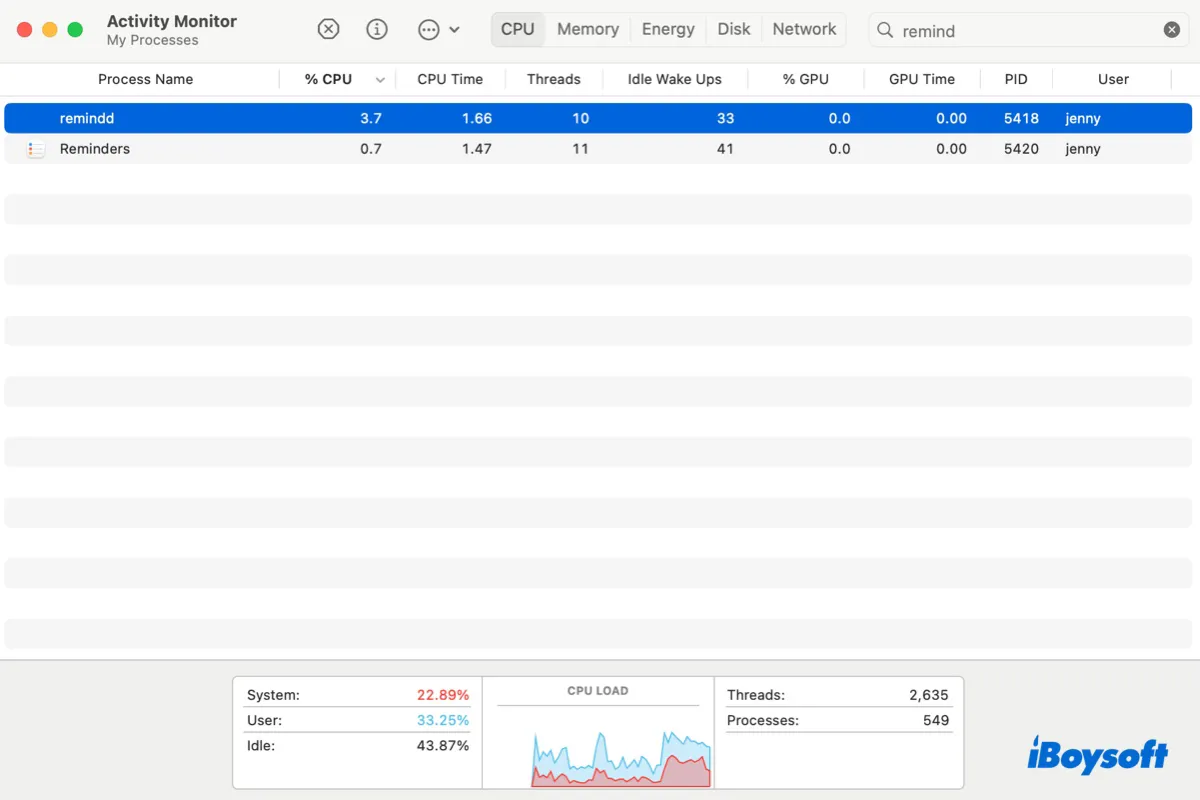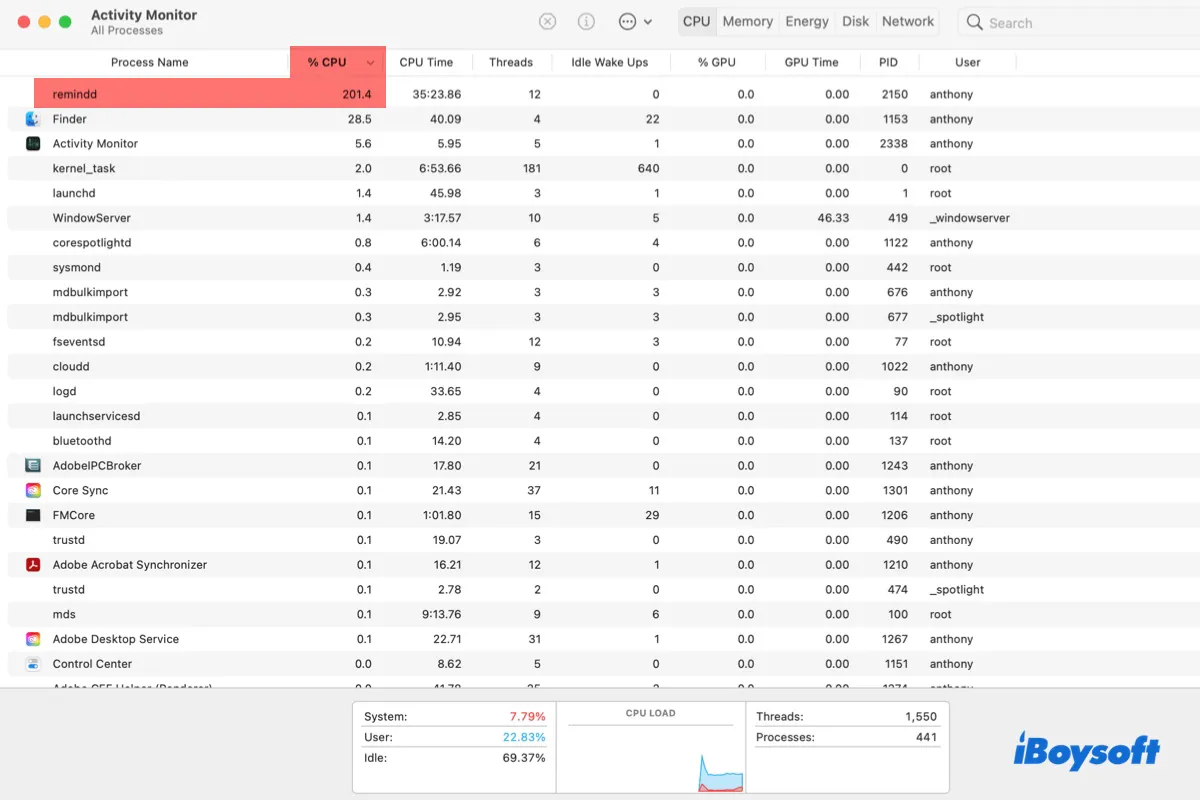Sometimes, the remindd process may consume high CPU usage in Activity Monitor. This can cause your Mac to be slow and hot, with loud fan noises. In this post, we'll help you stop the remindd process from using too much CPU on Mac.
What is remindd on Mac?

Remindd is a background process of the Reminders app. It's responsible for managing and coordinating reminders, such as setting off notifications for planned reminders, synchronizing reminder information across devices (if iCloud is used for Reminders), and ensuring that reminders are up-to-date.
Help others learn about the remindd process on Mac by sharing this post!
How to fix remindd high CPU usage on Mac?
Typically, the remindd process should only use minimal system resources. However, it might run into issues where it uses 100% or more CPU or memory. When that happens, you can use the following solutions to fix it.
Way 1: Turn off iCloud syncing
One possible reason for the high CPU usage of remindd could be due to issues with iCloud syncing your reminders. If you have enabled iCloud for Reminders, try turning it off.
- Open the Apple menu > System Settings/Preferences > Apple ID.
- Click iCloud.
- Disable Reminders from using iCloud.

- Reboot your Mac.
Way 2: Force quit remindd and Reminders
If remindd continues to spike your Mac's CPU power, you can force quit it and the Reminders app in Activity Monitor. Note that you may need to quit it multiple times to make it behave.
- Open Activity Monitor.
- Search for "remindd."
- Select it and click the ( x ) button.
- Click "Force Quit."

- Repeat the steps with the "Reminders" process.
Way 3: Update macOS
If there's a new system update available to your Mac, you can install it to acquire new bug fixes and security patches that may help you resolve the "remindd high CPU usage" issue.
Way 4: Delete reminders
Despite your efforts with the above solutions, sometimes the remindd process may continue to gobble up your Mac's CPU power. In such cases, you can delete all the reminders to mitigate situations where remindd may be needed.
Way 5: Disable remindd process in Terminal
As a last resort, you can disable remindd to eliminate the high CPU usage completely from the source. Keep in mind that disabling remindd will render the Reminders app unusable. But you can always reenable it after the problem is fixed.
Here's how to stop remindd from using too much CPU by disabling it:
- Disable SIP on Mac to allow modification of system daemons.
- Open Terminal and run the command below.launchctl unload -w /System/Library/LaunchAgents/com.apple.remindd.plist
- Reenable SIP.
- If you want to reenable the remindd process, run the following command.launchctl load -w /System/Library/LaunchAgents/com.apple.remindd.plist
Did the solutions help you stop remindd from using up CPU? If yes, share this post!
